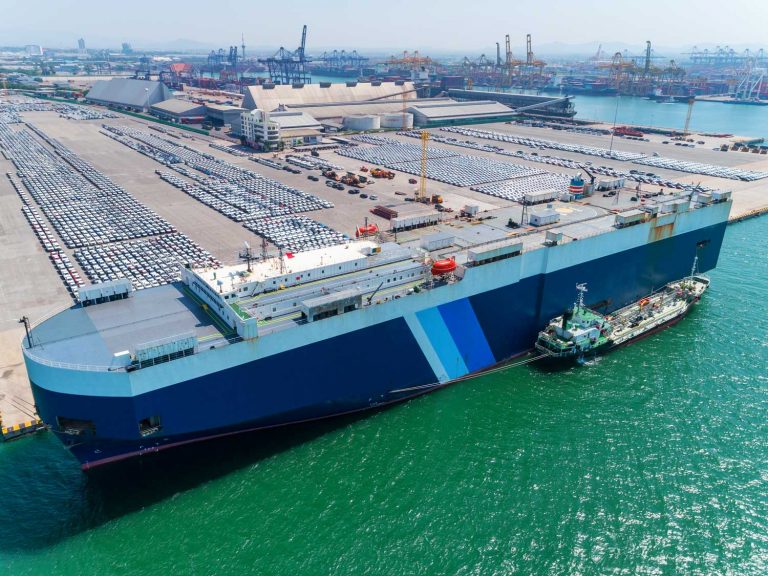
Date:
Car shipping post-Covid
With automotive demand flat-lining in the face of the COVID-19 pandemic, the knock-on effects to global roll-on, roll-off (RoRo) shipping has been profound, with ships removed from service, or earmarked for recycling, raising doubts that the RoRo sector will recover fully.
The backbone of global automotive transport has historically been the global fleet of large RoRo vessel called a pure car carrier (PCC) or pure car/truck carrier (PCTC), with the biggest capable of carrying over 8,000 cars.
Leading RoRo lines and operators have been grappling with uncertainty over the future of automotive shipping, with some pushing to substitute more breakbulk and project cargo shipments, as the global supply of new vehicles and equipment continues to be suppressed by low end-user demand.
United European Car Carriers reduced its sailing schedules and trading network, which covers Europe from the Baltic Sea to the eastern Mediterranean, in reaction to the fall in demand for its services due to vehicle factory closures.
Almost all manufacturers and original equipment manufacturers [OEMs] in the European automotive industry have suspended or reduced production, due to the pandemic.
It is uncertain when production will fully resume, but the RoRo lines are anticipating that it will take some time and will have a significant impact on the liner trading network, and while many continue to operate, it is with reduced sailing frequency.
Leading RoRo operator Wallenius Wilhelmsen said it would reduce its fleet by 10 to 15 vessels through a mix of lay-up, ship scrapping, and return chartered-in tonnage to their owners.
Eukor Car Carriers, which is 20% owned by South Korean vehicle makers Hyundai and Kia and 80% by Wallenius Wilhelmsen and operates 80 pure car and truck carriers (PCTCs) is seeking alternative types of cargo to its traditional automotive shipments, especially from Europe to Asia.
With car RoRo shipping declining so dramatically and the carriers now seeking alternative cargoes, container shipping is likely to be the more effective option for handling smaller volumes on a sporadic basis and more diverse routings.
In recent years RoRo critics have highlighted the deficiencies of RoRo shipping, its inability to cope with spikes in demand and the demands for flexibility that characterise the consumer vehicle market.
RoRo shipping is seen by many to be slow, expensive, inflexible, and laden with the risk of damage and theft, risks that multiply with each change of transport and that often add significantly to the cost of movement.
Automotive shipping by container has become particularly cost-effective and efficient, with the advent of new packaging technologies, which can secure as many as six vehicles within a single container.
The flexibility, security and potential cost savings of container shipping will appeal to many automotive logisticians, as they offer the option to move away from RoRo operators’ set routes and schedules, to the widest variety of global ports, schedules and services, with equipment that can be transferred from ships, to road, rail or barge transportation – slashing delivery times and lowering overall costs.
